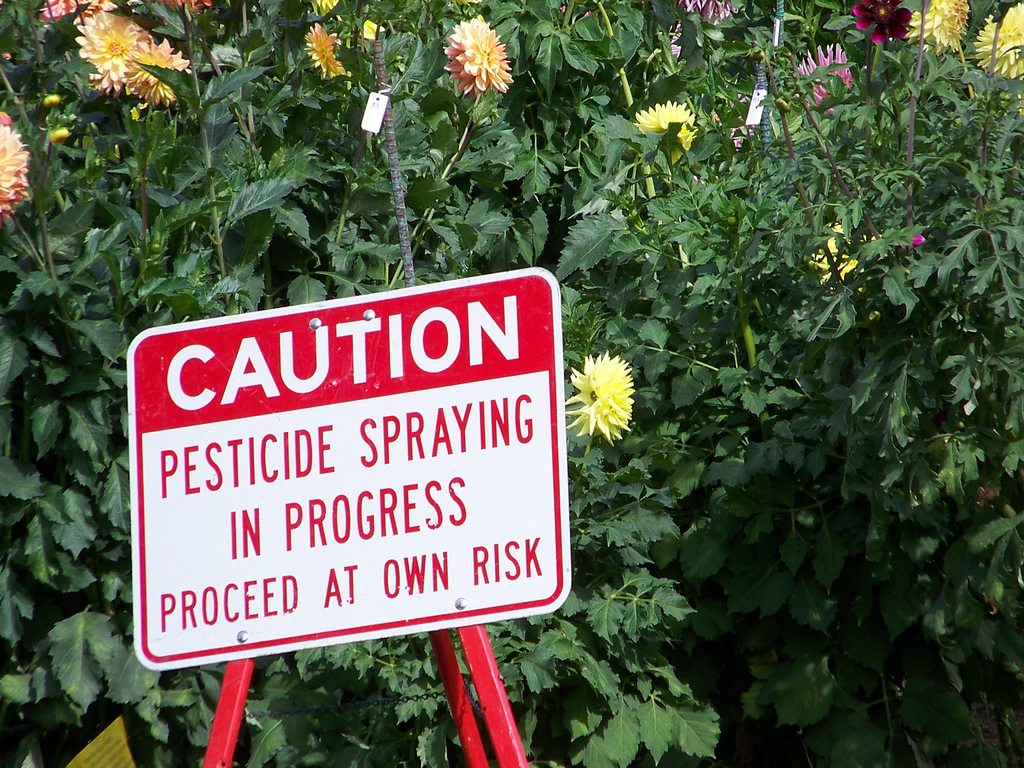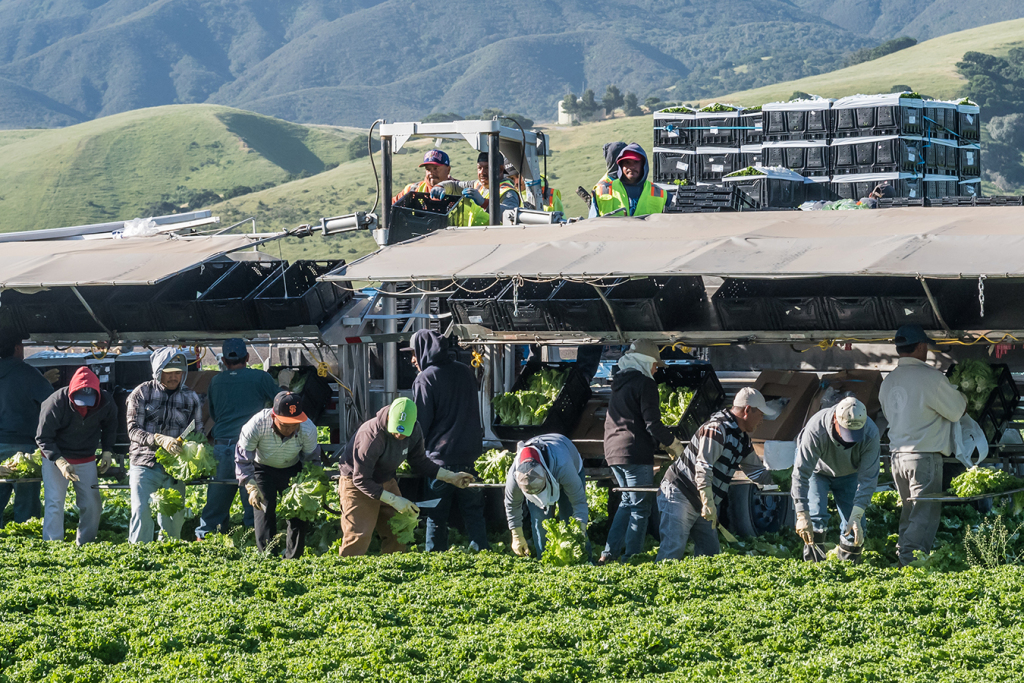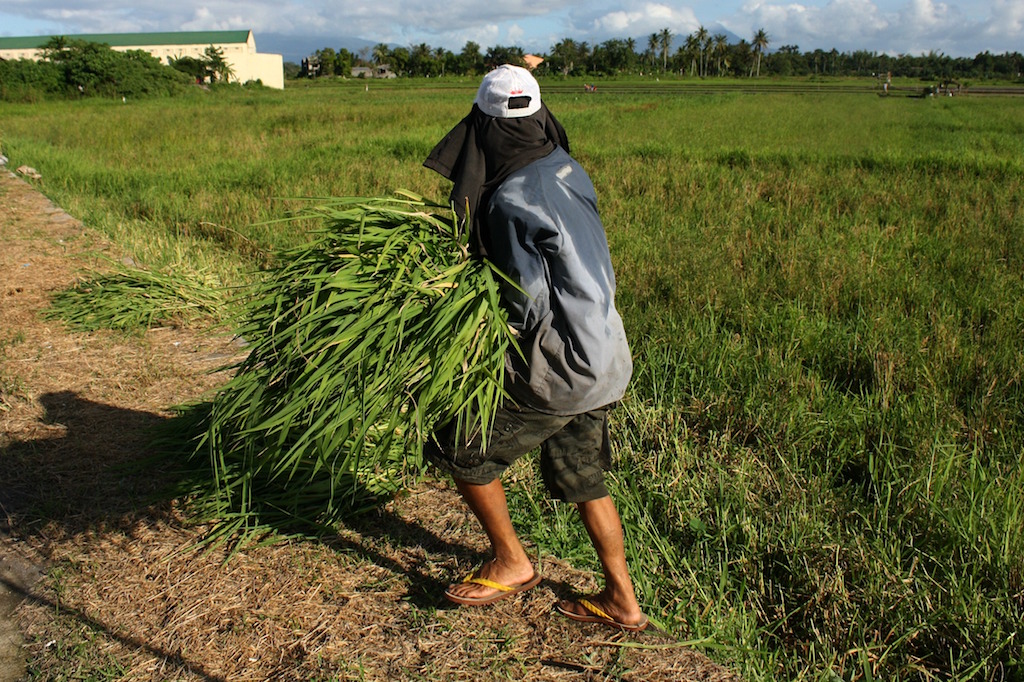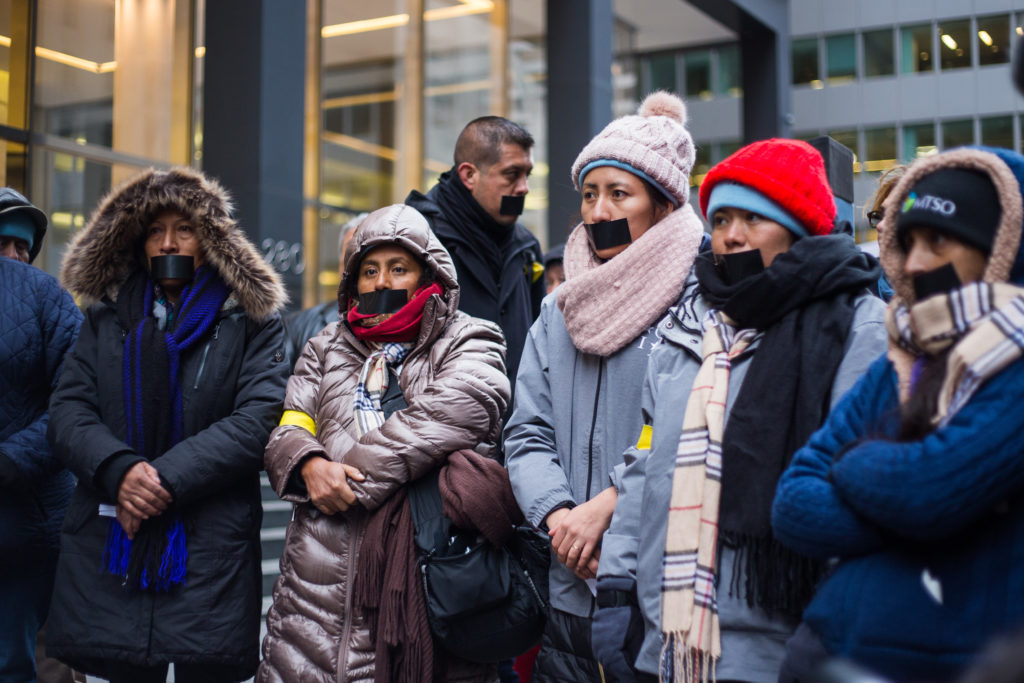On the morning of August 2, 2017, farmworkers harvesting garlic outside Bakersfield, California started to display alarming symptoms during a 4 a.m. shift. Some noticed a strong soapy taste in their mouths. Others experienced headaches and nausea. Most had irritated eyes and skin.
“Some folks were really bad,” Eriberto Fernandez, an organizer with United Farm Workers Foundation who arrived on scene later that morning, tells New Food Economy.
The suspected cause, as you might guess, was pesticides—but not the kind the farmers themselves had sprayed. They came from somewhere else.
The Kern County Agriculture Commissioner is currently testing the area for pesticide “drift”—a term used to describe how spray disperses inadvertently onto neighboring fields, harming crops and endangering anyone who happens to be working there.
And the Commissioner’s office thinks the drift may have come from one of two possible sources, according to Glenn Fankhauser, the county’s sealer of weights and measures. To the west, a field owned by the same farm was fumigated with metam sodium, a common pesticide, before water seals—a form of preventative irrigation that helps trap potentially dangerous gas treatments beneath the soils’ surface—were fully in place.
The other possibility: A field half a mile away had just been sprayed by helicopter with chlorpyrifos, a potent insecticide that’s been making news lately. Three months ago, in May, it was responsible for sickening at least 12 farmworkers outside southwestern Bakersfield. A local orchard had recently been sprayed, and the wind took a bad turn, exposing more than 50 workers harvesting cabbage at Dan Andrews Farms.
“I’m not pointing fingers or saying it was done incorrectly,” Efron Zavalza, Dan Andrews’ supervisor and food safety specialist, told KGET-TV, a local news station. “It was just an unfortunate thing the way it was drifted. The wind came and pushed everything east and you know we were caught in the path.”
Kern County—in central California, eastern neighbor to San Luis Obispo—is part of a major agricultural region, nicknamed the “salad bowl” of the United States. Veggies are big business, and in the summer months, pesticides, insecticides, and herbicides are being applied all the time. But while pests and weeds are front of mind for farm owners, everyday farmworkers too often are caught in the crossfire.
“When you have hazardous chemicals being applied as soil fumigants or sprayed into the air, it’s inevitable some of it is going to drift away from its intended target,” Fernandez said, in a release. “The alarming number of incidents over the past two months highlight how impossible it is to control drift.”
Chlorpyrifos is one of the world’s most common pesticides, but exposure can be serious business. Originally used as chemical weapon in World War II, the substance was repurposed as a pesticide by Dow Chemical and has been in constant use since 1965. More recently, health concerns have caused the Environmental Protection Agency (EPA) to limit its use. The agency banned chlorpyrifos in all household uses in 2000; since then, it’s banned it in the tomato industry, and limited its use in a variety of crops from grapes to tree nuts, as well as in public recreational spaces like golf courses, where it’s long been used to control termites.
In 2012, research from Columbia University found that chlorpyrifos exposure disturbed brain development in children exposed while in the womb. The findings—in addition to EPA’s own extensive testing, which found children younger than 2 years averaged more than 140 times the suggested level in their blood—were serious enough for the agency, under President Obama, to suggest banning its application at farms nationwide.
But in March, Scott Pruitt, EPA’s newly appointed chief, rejected the findings of his own agency, denying a petition from the National Resources Defense Council and the Pesticide Action Network to ban the pesticide entirely.
“We need to provide regulatory certainty to the thousands of American farms that rely on chlorpyrifos, while still protecting human health and the environment,”Pruitt said, in a statement. “By reversing the previous administration’s steps to ban one of the most widely used pesticides in the world, we are returning to using sound science in decision-making.”
Not everyone agreed, especially environmental groups, who decried the decision. Meanwhile, the Los Angeles Times reported that Pruitt had met privately with Dow executives shortly before the agency’s reversal; according to the nonprofit investigative journalism organization the Center for Public Integrity, the company donated $1 million to President Trump’s inaugural committee. Jim Jones, who ran EPA’s chemical safety unit under Obama, expressed disappointment. “They are ignoring the science that is pretty solid,” he told the Times.
While the debate rages on, farmworkers in Kern County still don’t know what they were exposed to on August 2—and won’t for a long time. According to Fankhauser, it will take several weeks to study the evidence; a written report won’t be publicly available for three to five months. If the Commissioner’s office determines there was in fact a violation, it can charge a maximum of $5,000 for every worker that sought medical treatment.
Since more than 70 people were exposed, you might think the expense could rack up quickly. But according to Fernandez, many of the workers left before the EMTs arrived. Whether that’s due to health concerns, or due to a fear of potential deportation among a heavily immigrant, heavily undocumented workforce, is hard to say. Whatever the reason, Fernandez says the vast majority of incidents like this one tend to go unreported.
“Farmworkers work in isolation, in very rural communities where the outreach and the information to where they should call is not given to them,” he says. “And most farmworkers don’t receive proper information or training at the beginning of their shifts, or at the beginning of the season, to notify the authorities should an incident like this occur.”
The debate around chlorpyrifos will continue, as industry officials and regulatory agencies deliberate over safety levels. A group of eight Democratic senators have proposed long-shot legislation to ban the pesticide entirely. But in the meantime, farmworkers will too often face a choice between the day’s paycheck and their health—a decision no one should be forced to make.











